
The University has always boasted of the international students attracted to our campus. A student body that comes from around the globe is a validation, a marker of excellence. This bit of bragging goes back to when the Kingdom of Hawaii was a foreign nation and was part of our self-promotion; though legacy enrollment was also an important affirmation. As evident in this exhibit from 1935, when your numbers stand at 346 total enrollment, you will cherish the origin-story of every student.
To employ a botanical metaphor: enrollment policy worked to attract students from far and wide, grafting the new limbs to the established trunk of local Portland students and alumni, thereby nourishing the growth of the whole through a diversity of membership on campus. Already in 1949, working with UNESCO, the University dedicated scholarship support to ensure opportunities for students from beyond American borders. In a 1962 address to the City Club of Portland, then-Vice President Rev. Paul E. Waldschmidt, CSC, described the dynamics of drawing International Students to UP as a sort of reverse Peace Corps, a good-in-itself, fostering global understanding and citizenship. Against some abstract strategy of representation, these early notices found in the Beacon and Alumni Bulletin (below) narrate emphases of incorporation.
International Student Enrollment
The title Director of International Students appears within the Division of Student Life for the first time in 1962. (A parallel position for Black and minority students begins in 1970.) The goal of this office is to assist students in navigating college, American culture, legal paperwork. And International Students did continue to enroll at the University through the next decades. Through the 1960s, the percentage of international enrollees increased from a steady-state 3-5% until achieving 6% and a total of 100 persons in 1969. The years between 1977-1982 represent the peak for International student enrollment, each year averaging over 400 International students, together constituting a full 15% of the entire student body.
And there, within the diversity success-story, an unusual housekeeping challenge emerges. A body of Muslim students at a Catholic college, students with a different spiritual diet; with different traditions, calendar, weekly rituals than that which the brothers and priests were familiar.
The Muslim Prayer Room
The earliest practice is not easy to construe. But there are weekly notices in the Beacon from 1985 onward listing Mehling Hall auditorium as the location for Friday Prayers. And while the early history of the Christie Hall prayer room is hazy, it seems to be the case that from about 1977, UP boasted a Muslim Prayer Room as an ornament for the Catholic campus.
During the decade when we drew increasing numbers of students from outside the US, in order to meet the personal needs of Muslim students, the University opened a public-use area in Mehling for congregational prayer and created a dedicated space-apart in Christie where individuals could repair privately to observe the cycle of daily prayers belonging to their religious expression.
Dr. Khalid Khan, Engineering
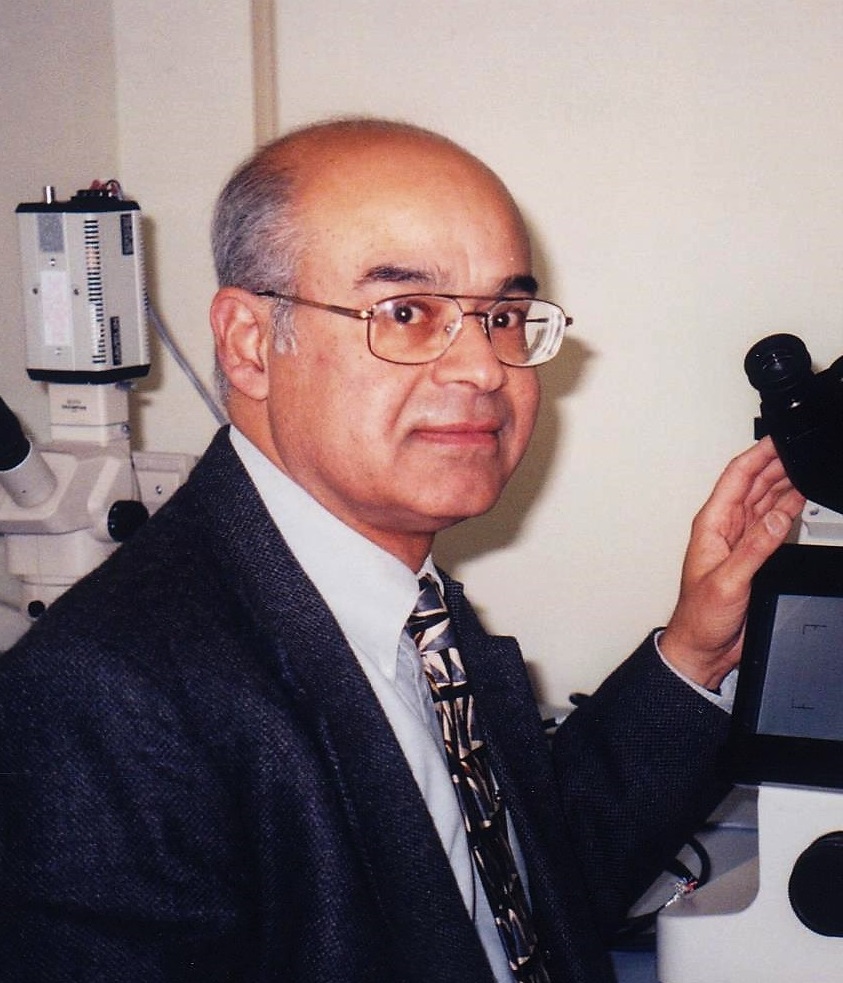
Our information is more ample after Professor Khalid Khan, PhD, joined the School of Engineering (1979-2018) and assumed the role of faculty liaison to the Muslim Student Association. The Association brought symposia, teach-ins, guest-speakers, and provided awareness and engagement to campus. Also, periodic recurrent Beacon feature articles exploring faith-dialogues, Ramadan, and the possibilities and limits of cultural diversity on a Catholic campus (see select Beacon sampling below).
Dr. Khan was an advocate who worked together with students, the Office of Residence Life, and with Student Services to help design and establish the Muslim prayer space. He was a regular speaker on religious panels presented at UP and was an organizer of the Faculty Senate 1993 Challenge of Diversity project to engage UP faculty and students in curriculum and cross-cultural dialogues. The Prayer Room is on the ground floor of Christie Hall. The prayer space is provided with facilities for ablution, scriptural resources, and orientation towards Mecca.
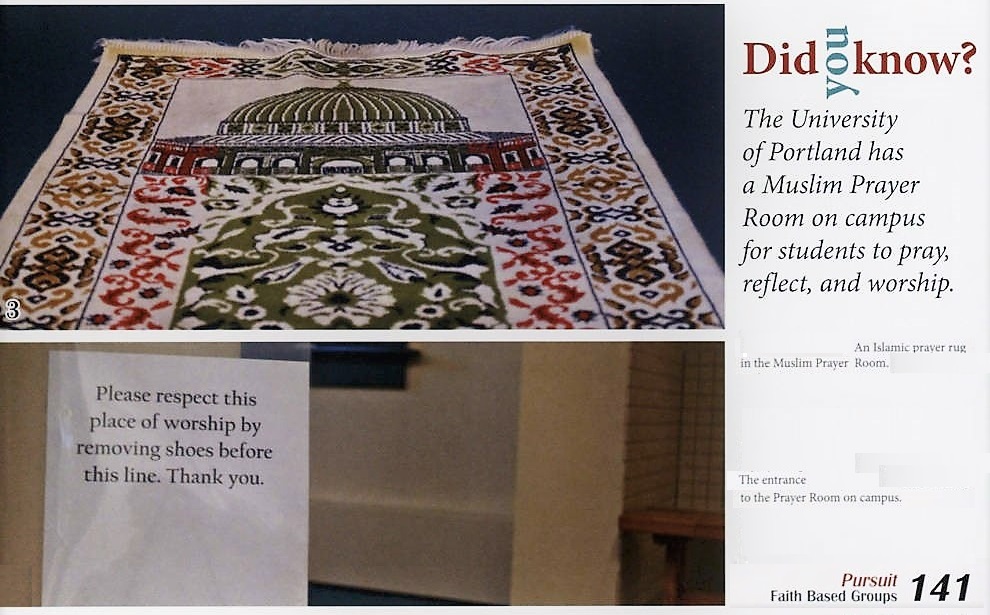
Supplemental Exhibits (click to enlarge):

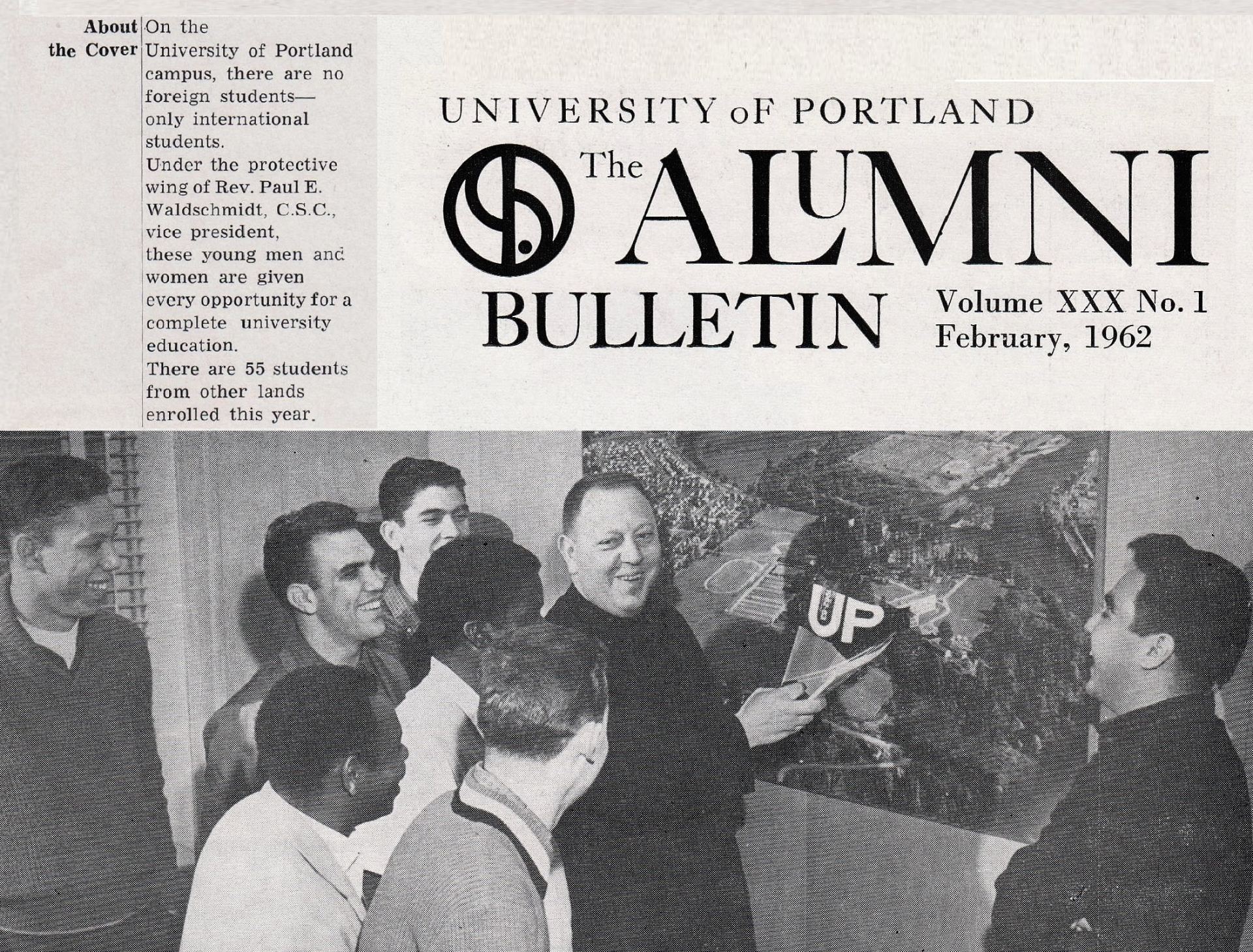
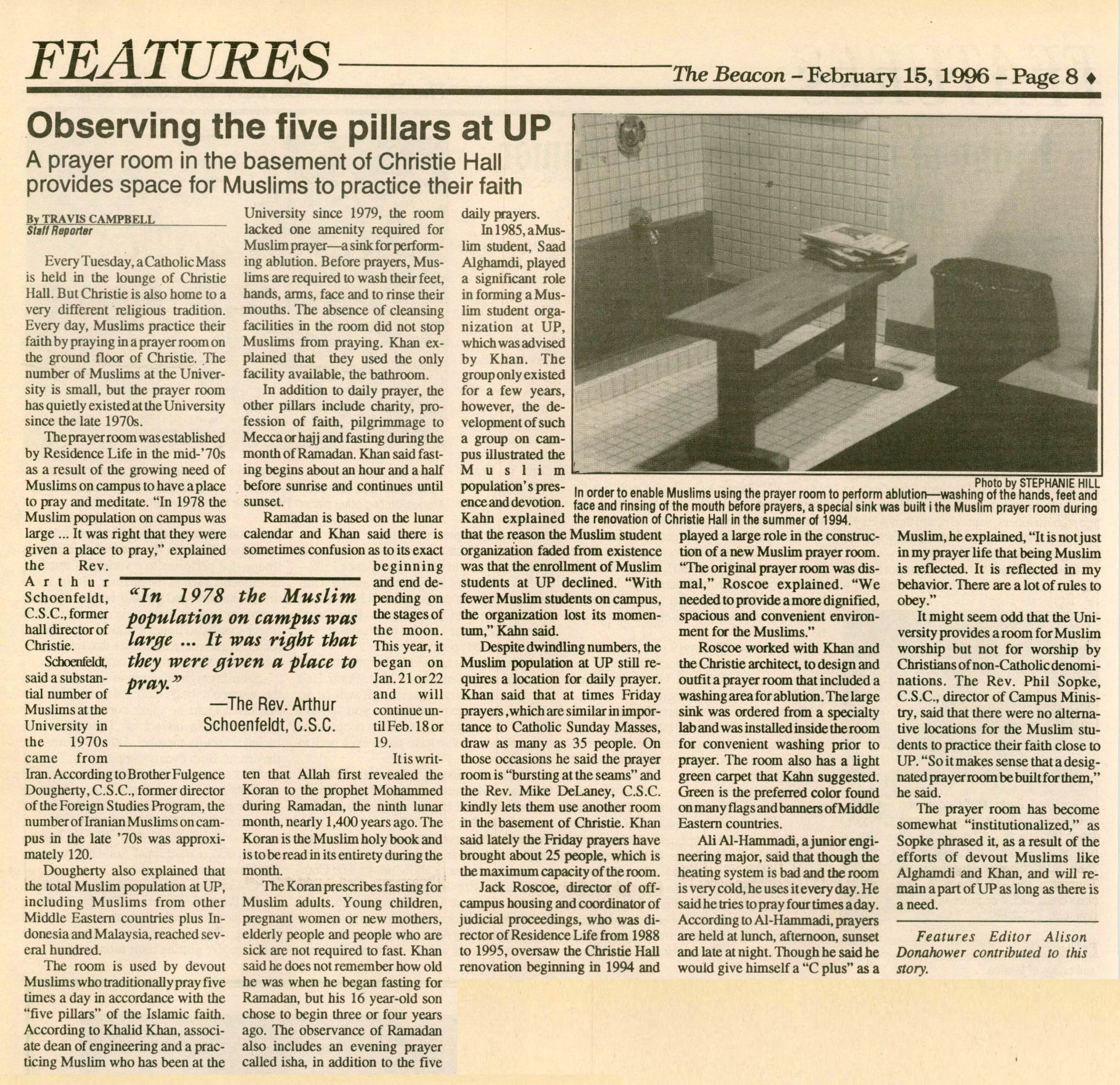


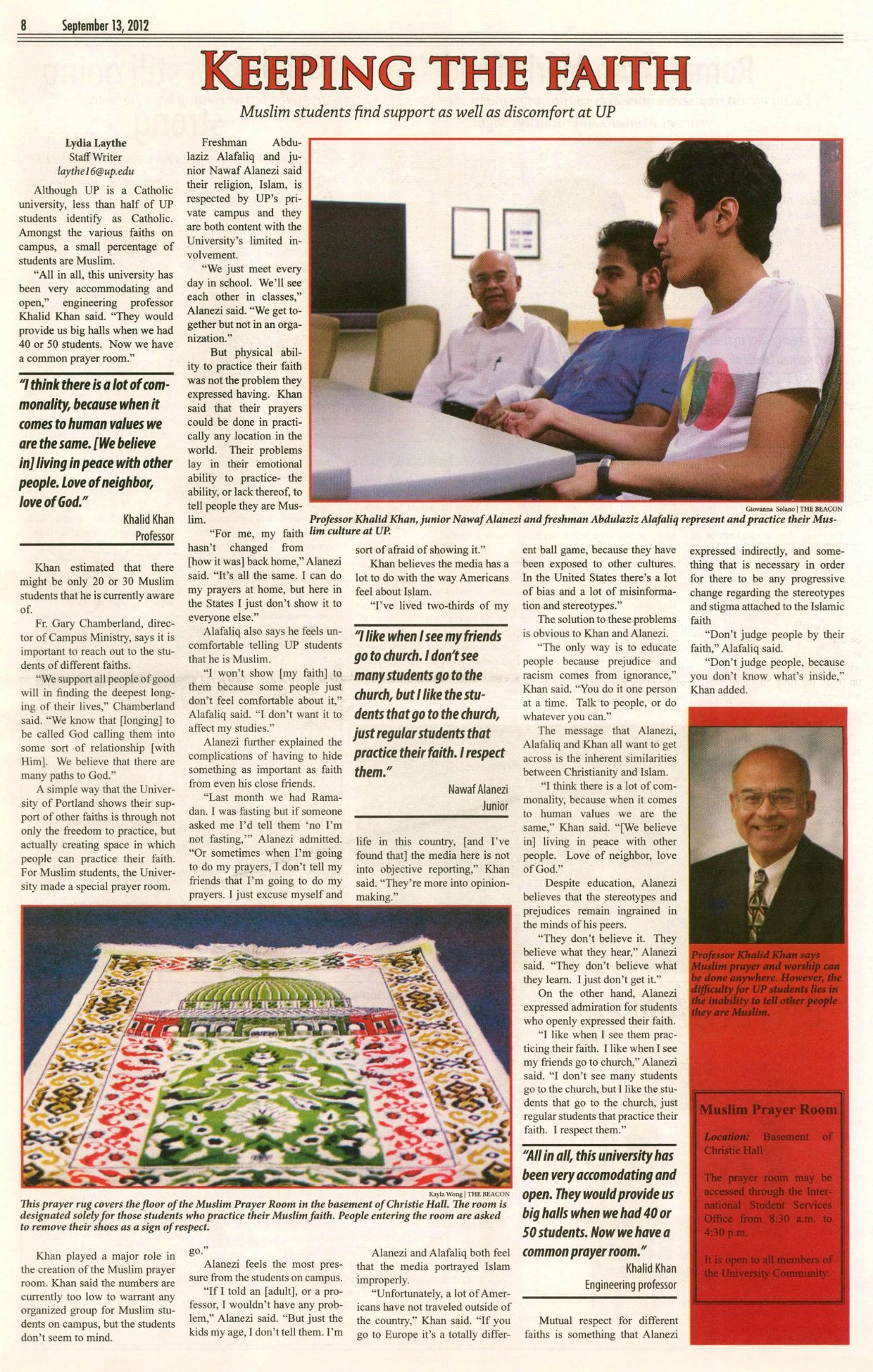
From UPBeat:
https://sites.up.edu/upbeat/up-muslim-prayer-room-did-you-know/
Interesting set of articles – thanks for researching and sharing- keep up the great work – Jim Berchtold (Alum & Regent)